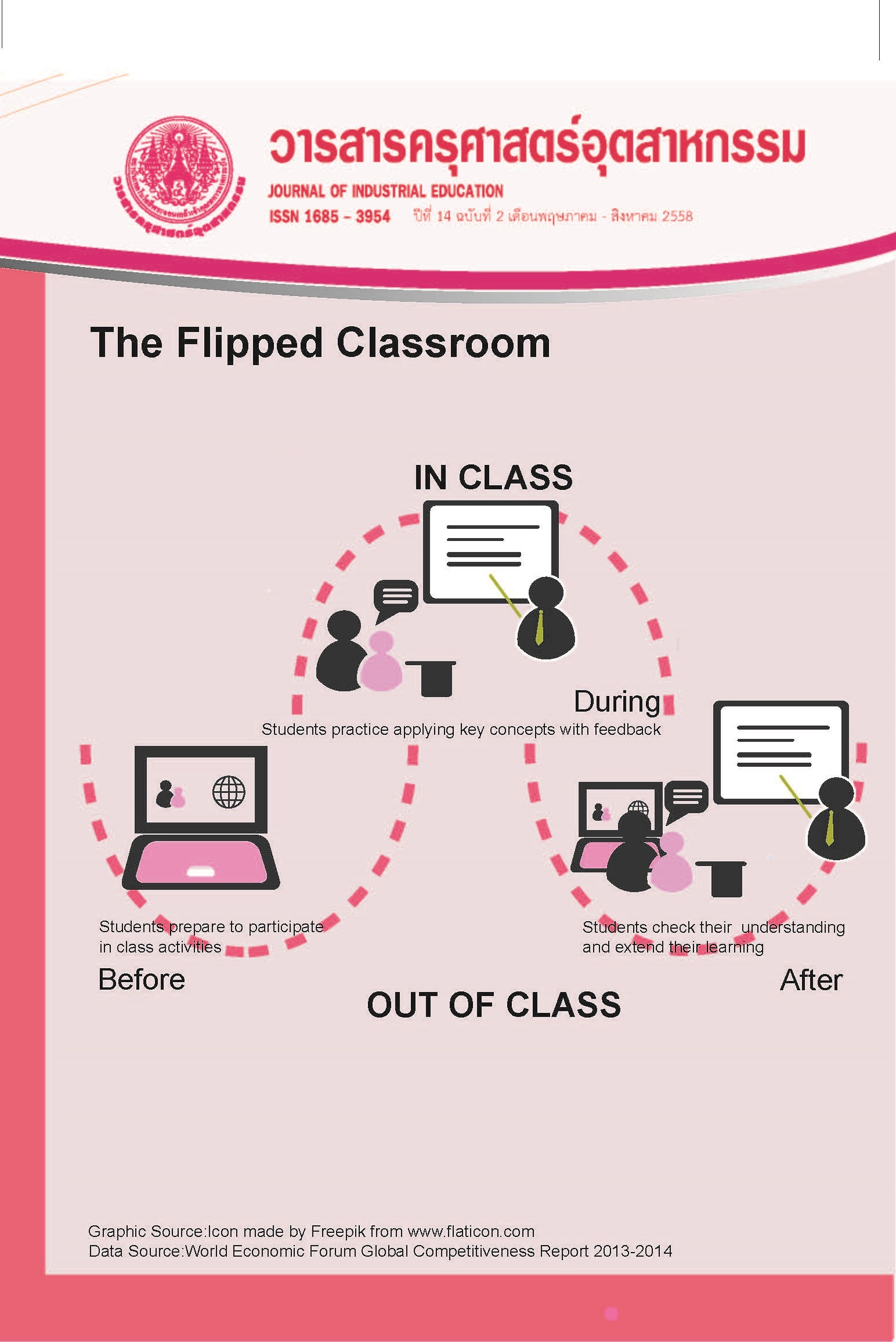Parametric Study of Designing for Thermal Comfort of Traditional Thai Houses in Central Region
Main Article Content
Abstract
This research is to study the value of thermal comfort in the central Thai traditional house in Thailand is calculated from samples of Thai traditional houses. This house is built from parametric study from concept of Rutai Jaijongruk known well to identify elements of Thai traditional house’s proportion and apply equation with the house. There are groups of parameter being able to classify 10 groups; 1) Thai traditional house‘s form and shape, 2) House orientation, 3) Building materials, 4) Floor, 5) Wall pattern, 6) Roof’s gable, 7) Material of roof, 8) Ceiling, 9) Direction, 10) Location. According to the concept above, samples of Thai traditional house are identified to 72 types of them in this research. Each type of them is modeled as digital model by EDSL Tas Engineering for computing both Humidity and Temperature value. This research performs with bedroom, balcony, and space under the Thai house under collecting data in 365 days or a year by dividing this collection follow seasons. Both of factors are calculated in terms of comfortable zone from the framework of Kitchai Jikajonwanich.
In accordance with conclusion of research, it shows that the Thai traditional houses; no.14, 18, and 31, can provide the most value of comfortable zone in summer around 4.48%, in rainy around 3.47%, and nearly 3.47% in winter. There are average value of year approximately 6.25% and minimum thermal comfort value of no. 6 around 0.05% in summer, 0.10% in rainy, and 0.15% in winter including 0.20% from average value of year. The groups of parameter in Thai traditional house design; form and shape, ceiling, roof material, direction, and location, directly affect the comfortable zone value with the houses modeled from maximum to minimum in turn.
Article Details
"The opinions and contents including the words in papers are responsibility by the authors."
"ข้อคิดเห็น เนื้อหา รวมทั้งการใช้ภาษาในบทความถือเป็นความรับผิดชอบของผู้เขียน"
References
[2] Fanger, O.P. 1967. Thermal Comfort. New York: McGraw-Hill.
[3] ชญาณิน จิตรานุเคราะห์. 2550. การวิเคราะห์สาระสำคัญของเทคโนโลยีเรือนไทยภาคกลาง. วิทยานิพนธ์ปรัชญาดุษฎีบัณฑิต สาขาสถาปัตยกรรม จุฬาลงกรณ์ มหาวิทยาลัย.
Chitranukron, C. 2007. The Analysis of Essential Factors in Traditional Thai Horse Technology Central Thailand. Doctor of Philosophy in Architecture. Chulalongkorn University.
[4] อรศิริ ปาณินท์. 2539. บ้านและหมู่บ้านพื้นถิ่น. กรุงเทพฯ: โรงพิมพ์มหาวิทยาลัยธรรมศาสตร์ ท่าพระจันทร์.
[5] สมภพ ภิรมย์. 2545. บ้านไทยภาคกลาง. พิมพ์ครั้งที่ 4. กรุงเทพฯ: องค์การค้าของคุรุสภา.
[6] พิทาน ทองศาโรจน์ และอรศิริ ปาณินท์. 2557. รูปแบบ และองค์ประกอบบ้านเรือนไทยประเพณีภาคกลางที่เปลี่ยนแปลงใน ปัจจุบัน.วารสารวิชาการคณะ สถาปัตยกรรมศาสตร์ สจล., 16(18), น. 35-48.
Thongsarojana,P. & Panin, O. 2014. Changes of Forms and Elements of the Central Thai Traditional House in Present Day. Journal of Faculty of Architecture KMITL, 16(18), p. 35-48.
[7] ฤทัย ใจจงรัก. 2539. เรือนไทยเดิม. กรุงเทพฯ: สมาคมสถาปนิกสยามในพระบรมราชูปถัมภ์.
[8] พิทาน ทองศาโรจน์ และอรศิริ ปาณินท์. 2557. การศึกษารูปแบบและสัดส่วน และแนวทางการสร้างสัดส่วนเรือนไทยประเพณี ภาคกลางแบบอื่นๆจากสัดส่วนมาตรฐานของรองศาสตราจารย์ฤทัย ใจจงรัก. วารสารครุศาสตร์อุตสาหกรรม,13 (2), น. 111-118.
Thongsarojana,P. & Panin, O. 2014. A Study of How to Find and Create Proportion of Additional Central Thai Traditional Houses from Standard Proportion Base on Associate Professor Rutai Jaijonruk. Journal of Industrial Education, 13(2), p.111-118.
[9] พิทาน ทองศาโรจน์ 2558. การศึกษาพารามิเตอร์ในการออกแบบเรือนไทยประเพณีในภาคกลางเพื่อสภาวะน่า สบาย.วิทยานิพนธ์ปรัชญาดุษฎีบัณฑิต สาขาสิ่ง แวดล้อมสรรค์สร้างมหาวิทยาลัยเกษตรศาสตร์.
Thongsarojana, P. 2015.Parametric Study for Designing Traditional Thai House in Central Region for Thermal Comfort. Doctor of Philosophy in Built Environment. Kasetsart University.
[10] Environmental Design Solutions Limited. 2013. Tas Engineering. Retrieved February 25, 2014, from https://www.edsl.net/main/Software/Designer.aspx
[11] กิจชัย จิตขจรวานิช. 2547. สภาวะน่าสบายและการปรับตัวเพื่ออยู่แบบสบายของคนในท้องถิ่น.รายงานเสนอสถาบันวิจัยและ พัฒนา มหาวิทยาลัยศิลปากร 2547. กรุงเทพฯ: โรงพิมพ์มหาวิทยาลัยศิลปากร.
Jikhajornwanich, K. 2004. Thermal comfort and Adaptability to Living for Local People. Report presentation for R&D. Silpakorn University 2004. Bangkok. Silpakorn University press.
[12] กรมพัฒนาพลังงานทดแทนและอนุรักษ์พลังงาน. (ม.ป.ป.). เอกสารการออกแบบประหยัดพลังงาน ภาคอาคารธุรกิจ [ออนไลน์}. เข้าถึงได้จาก https://www2.dede.go.th/bhrd/old/web_display/websemple/Commercial(PDF)/Bay38BuildingFeatures.pdf (วันที่ค้น ข้อมูล: 10 กุมพาพันธ์ 2558).
Department of Alternative Energy Development and Efficiency. (n.d.). Manual for Energy Design in Commercial Building. [Online]. Retrieved from https://www2.dede.go.th/bhrd/old/web_display/websemple/Commercial(PDF)/Bay38BuildingFeatures.pdf (February 10, 2015).
[13] UK Meteorological Office. 2010. National Meteorological Library and Archive Fact sheet 6 – The Beaufort Scale (Online) Retrieved from https://www.metoffice.gov.uk/media/pdf/4/4/Fact_SheSh_No._6_-_Beaufort_Scale.pdf (February 1, 2015).

